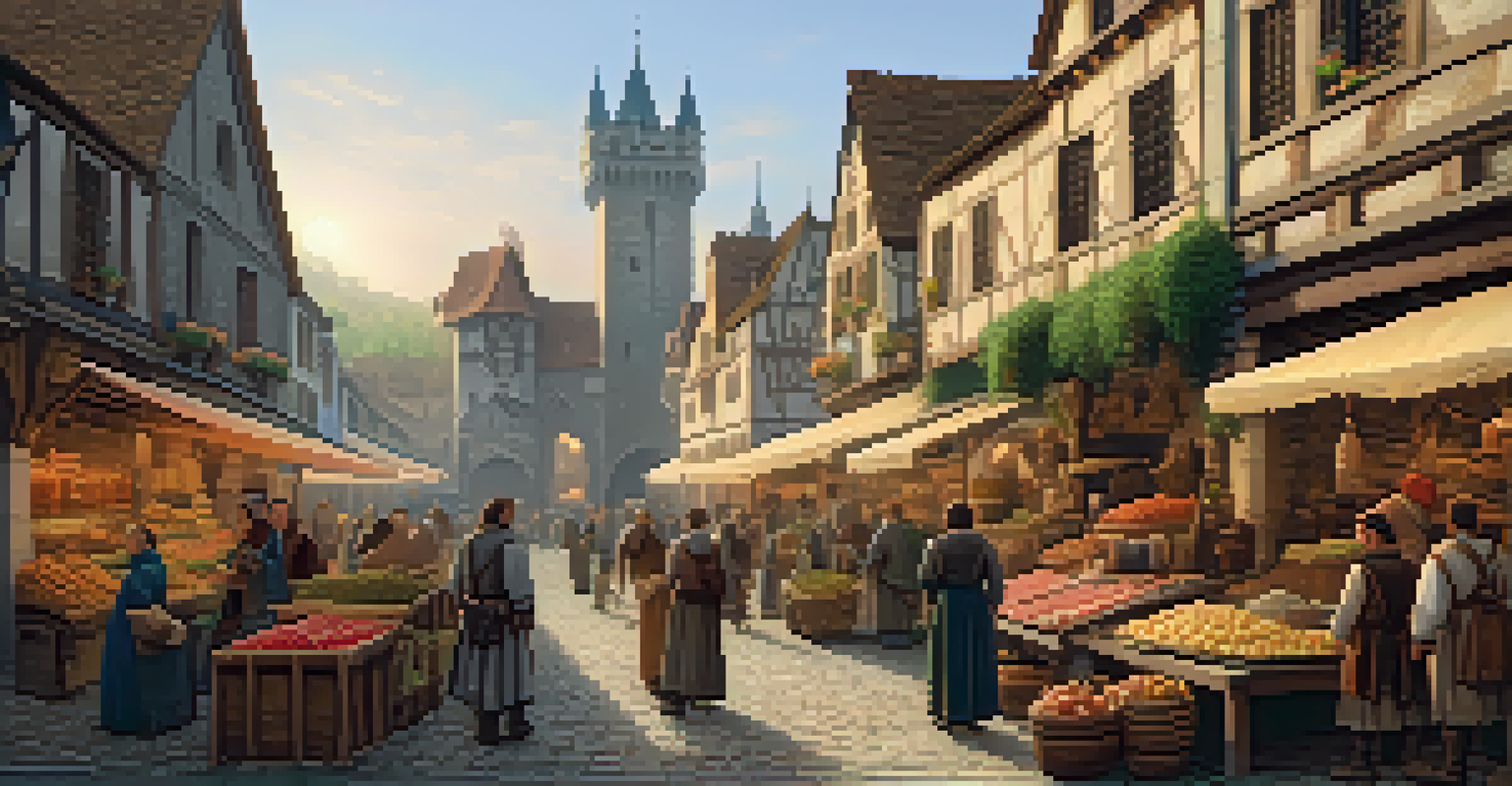The Influence of CGI on Modern Filmmaking Techniques

Understanding CGI: A Game Changer for Filmmakers
Computer-Generated Imagery, or CGI, has revolutionized the film industry. It allows filmmakers to create stunning visuals that were previously impossible to achieve. From fantastical creatures to expansive landscapes, CGI opens up a world of creative possibilities.
The only way to do great work is to love what you do.
Before CGI, filmmakers were limited by practical effects and set designs, which often required extensive planning and budget considerations. Today, with CGI, entire worlds can be crafted digitally, enabling stories to come to life in ways that captivate audiences.
This technological advancement not only enhances visual storytelling but also impacts the way directors approach their projects, allowing for greater experimentation and innovation in the filmmaking process.
The Role of CGI in Storytelling
CGI plays a crucial role in modern storytelling by allowing filmmakers to visualize complex narratives. For example, in films like 'Avatar' or 'The Lord of the Rings', CGI helps create immersive worlds that engage viewers on multiple sensory levels. These visuals often serve as a character in their own right.

By integrating CGI into storytelling, filmmakers can push the boundaries of imagination, bringing fantastical elements to life that resonate with audiences. This not only elevates the plot but also deepens emotional connections as viewers become engrossed in these visually rich environments.
CGI Transforms Visual Storytelling
CGI enables filmmakers to create stunning visuals and immersive worlds, enhancing narrative depth and audience engagement.
Moreover, CGI can simplify storytelling by providing visual cues that enhance understanding. When done well, it complements the narrative without overshadowing it, creating a balanced viewing experience.
The Evolution of CGI in Film History
CGI's journey began in the late 20th century, with groundbreaking films like 'Tron' and 'Jurassic Park' paving the way. These films demonstrated the potential of CGI, setting new standards for visual effects in cinema. As technology advanced, so did the capabilities of CGI, leading to more realistic and intricate designs.
Creativity takes courage.
In the early 2000s, the introduction of motion capture technology further transformed CGI, allowing filmmakers to blend live-action performances with digital effects seamlessly. This technique not only enhances realism but also provides actors with new tools to express their characters.
Today, CGI continues to evolve, with innovations such as virtual reality and real-time rendering, which promise to redefine how stories are told in the future. Filmmakers are now equipped with a powerful toolkit to bring their creative visions to life.
CGI vs. Practical Effects: Finding the Balance
The debate between CGI and practical effects is a longstanding one in the filmmaking community. While CGI offers limitless possibilities, practical effects bring a tangible quality to films that many viewers appreciate. Movies like 'Mad Max: Fury Road' demonstrate how practical effects can create stunning visuals while CGI enhances them subtly.
Finding the right balance between CGI and practical effects is crucial for maintaining authenticity in storytelling. Filmmakers often choose to blend both techniques to achieve the desired emotional impact and visual fidelity.
Balancing CGI and Practical Effects
Finding the right mix of CGI and practical effects is essential for maintaining authenticity and emotional impact in films.
Ultimately, the choice between CGI and practical effects depends on the story being told. A thoughtful approach can lead to a more immersive experience that resonates with audiences.
CGI and Audience Expectations
As CGI has become more prevalent, audience expectations have evolved significantly. Viewers now anticipate high-quality visuals in every film, which can create pressure on filmmakers to deliver spectacular effects. This shift has led to an increased focus on visual excellence in modern filmmaking.
However, this expectation can sometimes overshadow the importance of storytelling. While stunning visuals are essential, they should serve the narrative rather than distract from it. Filmmakers must strike a balance to meet audience expectations without compromising the core of the story.
In a landscape where CGI is ubiquitous, creativity and originality in storytelling remain key to captivating audiences. The most successful films manage to combine breathtaking visuals with compelling narratives.
The Future of CGI in Filmmaking
As technology continues to advance, the future of CGI in filmmaking looks promising. Innovations like artificial intelligence and machine learning are already beginning to influence how CGI is created and integrated into films. These technologies can streamline processes and enhance creative possibilities.
Additionally, as virtual reality and augmented reality gain traction, filmmakers are exploring new ways to engage audiences. CGI will play a pivotal role in these immersive experiences, allowing viewers to interact with stories on an unprecedented level.
Future Innovations in CGI
Emerging technologies like AI and virtual reality promise to redefine CGI's role in filmmaking, enhancing audience experiences.
Ultimately, the future of CGI in filmmaking will depend on how well filmmakers adapt to these changes while staying true to the art of storytelling. The journey ahead is as exciting as the stories yet to be told.
Conclusion: Embracing CGI for Creative Storytelling
CGI has undoubtedly changed the landscape of modern filmmaking, offering endless opportunities for creativity and expression. By embracing this technology, filmmakers can create visually stunning narratives that resonate with audiences. However, it's essential to remember that at the heart of every great film lies a compelling story.
As filmmakers continue to explore the possibilities of CGI, they must also prioritize storytelling and character development. A film that combines exceptional visuals with a strong narrative is more likely to leave a lasting impression on its viewers.

In conclusion, CGI is a powerful tool that, when used thoughtfully, can elevate the art of filmmaking and create unforgettable cinematic experiences.